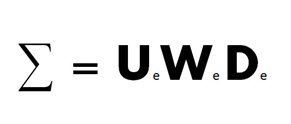Social Media Marketing: A quick look at Facebook EdgeRank
When I first graduated from high school, I took a job at a day care.
I was hired initially because I made it my personal goal to sign up as many kids as possible for our services. Of course, the responsibilities of more children under your supervision solves one set of problems while creating new ones.
One thing I quickly learned is that it’s pretty tough to convince a large group of kids to take a nap without using bribes of their preferred currency … chocolate.
So needless to say, my employment at the day care was brief because my true value as an employee was not just based on increasing volume, but also on how effective I was at engaging the volume that already existed.
Social media goal setting
A lot of marketers who have been conditioned by years of hard time spent in the midst of the media industrial complex hold the belief they should run their social media campaigns like I was running the day care – by taking a “more is always better” approach.
The idea behind this belief is simple.
Consumers who use Facebook have eyeballs. Therefore, the more eyeballs I can put onto our brand’s social media page the more “awareness” we can create which should eventually result in more business.
Because more is always better, right?
Fun with algorithms
The biggest problem with taking a “more is always better” approach to your social media marketing is a rooted assumption that all of your Facebook followers will see all of your content every time you post something.
Unfortunately, that’s simply not true.
Take our MarketingSherpa Facebook page, for example. On average, our posts reach somewhere around 15.26% of our followers on a given day, depending on the type of content.
So how can that be?
In three words … Facebook curates content.
According to Hubspot, the average Facebook fan spends about 40% of their time on the newsfeed as opposed to just 12% spent on profiles or brand pages. That margin makes the newsfeed the center of the Facebook universe.
So, to ensure that people have the most enriched newsfeed experience possible, Facebook curates content based upon on their homegrown algorithm known as “EdgeRank.”
There are three components to EdgeRank, wherein:
- U = Affinity: which takes into account the past relationship between a Facebook user and your brand
If a user has interacted heavily with your social media content on Facebook previously, then it’s very likely they will see your next content offering in their newsfeed.
- W = Weight: which relates to the types of content you have created. Some users prefer images while others may prefer text or video
The more a user interacts with a particular type of content through likes, comments and tags, then the more likely their preferred content types will appear in their newsfeed. If a user likes all of your pictures, then they will likely see the next picture your brand posts.
- D= Decay: which is typically never a good thing
The older a post is, the less likely it is to appear on the newsfeed of a Facebook follower.
Increasing eyeballs through engagement
When you consider EdgeRank in your strategy, it becomes painfully clear why increasing the number of Facebook likes that your page has received is only one very small piece of the “awareness” puzzle.
A much more effective way to increase your brand awareness is through focusing on producing content that engages users.
This idea stems directly from the EdgeRank algorithm, given we know that user interactions with a brand’s content will result in a greater likelihood of future content being delivered to them.
Related Resources:
Social Media Marketing: Which type of content is appropriate for different platforms?
Navigating the Four-Phase Social Media Process
Informal Study: Professional image content generates 121% more Facebook shares
Categories: Social Networking Evangelism Community analytics, content marketing, customer engagement, marketing insights, marketing tactics, social media, social media marketing strategies











A business must ensure that its Facebook posts are reaching most of the intended audience. Interesting but relevant posts are always good to have on your Facebook page.